
Botrytis cinerea is a necrotrophic fungus that affects many plant species, although its most notable hosts may be wine grapes. In viticulture, it is commonly known as "botrytis bunch rot"; in horticulture, it is usually called "grey mould" or "gray mold".

The grey heron is a long-legged wading bird of the heron family, Ardeidae, native throughout temperate Europe and Asia, and also parts of Africa. It is resident in much of its range, but some populations from the more northern parts migrate southwards in autumn. A bird of wetland areas, it can be seen around lakes, rivers, ponds, marshes and on the sea coast. It feeds mostly on aquatic creatures which it catches after standing stationary beside or in the water, or stalking its prey through the shallows.

The grey wagtail is a member of the wagtail family, Motacillidae, measuring around 18–19 cm overall length. The species looks somewhat similar to the yellow wagtail but has the yellow on its underside restricted to the throat and vent. Breeding males have a black throat. The species is widely distributed, with several populations breeding in Eurosiberia and migrating to tropical regions in Asia and Africa. The species is always associated with running water when breeding, although they may use man-made structures near streams for the nest. Outside the breeding season, they may also be seen around lakes, coasts and other watery habitats. Like other wagtails, they frequently wag their tail and fly low with undulations and they have a sharp call that is often given in flight.

Salix cinerea is a species of willow native to Europe and western Asia.
The hybrid elm cultivar Ulmus × hollandica 'Cinerea' was first listed by George Lindley in 1815, as Ulmus cinerea, the ash-coloured elm, and later by the André Leroy Nurseries, Angers, France, in 1856. It was distributed as Ulmus cinerea by the Baudriller nursery, Angers, and as Ulmus montana cinerea by Louis van Houtte of Ghent. A specimen in cultivation at Kew in 1964 was found to be U. × hollandica, but the tree at Wakehurst Place remains listed as U. glabra 'Cinerea'.

Donacia is a large genus of aquatic leaf beetles in the subfamily Donaciinae. Like other members of that subfamily, the beetles have long antennae. They are active and able to fly. Larvae feed on submerged portions of aquatic plants, such as water lilies, and breathe oxygen from plant vessels. Adults live on surface parts of the same plants.

Donacia aquatica is a species of leaf beetle native to Europe.

Donacia marginata is a species of leaf beetle native to Europe.
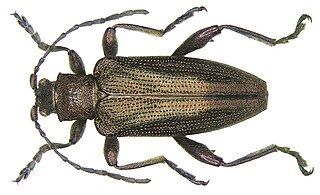
Donacia obscura is a species of leaf beetle native to Europe.
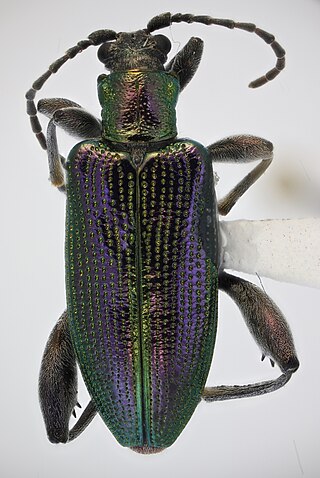
Donacia magnifica is a species of aquatic leaf beetle in the family Chrysomelidae. It is found in North America.
Donacia tuberculata is a species of aquatic leaf beetle in the family Chrysomelidae. It is found in North America.
Donacia assimilis is a species of aquatic leaf beetle in the family Chrysomelidae. It is found in North America.

Donacia cincticornis is a species of aquatic leaf beetle in the family Chrysomelidae. It is found in the Caribbean Sea, Central America, and North America.
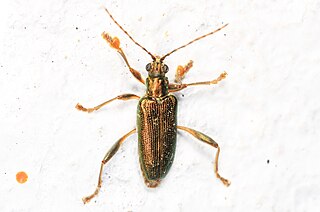
Donacia palmata is a species of aquatic leaf beetle in the family Chrysomelidae. It is found in North America.
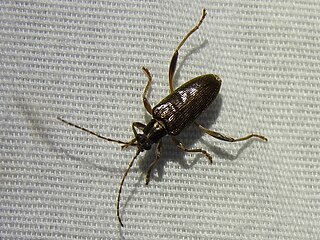
Donacia hypoleuca is a species of aquatic leaf beetle in the family Chrysomelidae. It is found in North America.
Donacia parvidens is a species of aquatic leaf beetle in the family Chrysomelidae. It is found in North America.
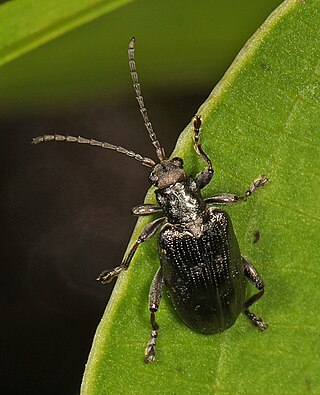
Donacia caerulea is a species of aquatic leaf beetle in the family Chrysomelidae. It is found in North America.
Donacia distincta is a species of aquatic leaf beetle in the family Chrysomelidae. It is found in North America.













